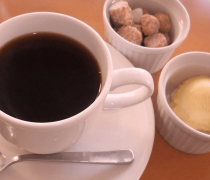Introduction to the treatment method of planting and Development History of single Bean Flavor in Hasunda Coffee Garden

For professional baristas, please follow the coffee workshop (Wechat official account cafe_style)
Ecuador Ecuador
Population: 15224000
Ecuadorian coffee is increasingly prominent in the boutique coffee industry, and although low-lying areas are unlikely to produce good coffee, higher elevations have great potential.
GALAPAGOS
The Galapagos Islands GALAPAGOS produces a small amount of coffee in the Galapagos Islands, and its supporters claim that the climate there simulates higher elevations and can grow higher-quality coffee. Coffee like this can be very expensive and does not reflect the quality in price.
Altitude: 350m
Harvest: June-September and December February varieties: bourbon
Coffee treasures from the hometown of giant turtles, which are of excellent quality and do not use any chemicals when growing.
Coffee is grown in Saint Crst ó bal. St. Cristobal is a larger island in the Galapagos Islands (Galapagos Islands) and the only one in the archipelago with plenty of fresh water. At an altitude of 410m, there is a small lake called El.Junco, where several streams flow along the rocks and volcanic rocks on the southern slope of the island, and mineral-rich fresh water moistens the land of St. Cristobal, keeping the soil moist and fertile.
In 1875, the Ecuadorian native Ma Covos planted about 100 hectares of Arabian bourbon coffee trees at the Hasunda Coffee Garden (Hacienda El Cafetal) in San Cristobal. The elevation of the plantation is between 140m and 275m, and the climate in this area is equivalent to that of 910m to 1830 m inland. This gradient is suitable for the growth of high acidity extra hard coffee beans (SHB) and is the key to the high quality of coffee.
As the world coffee industry is moving towards a targeted mass production model, a small and uncertain coffee industry such as San Cristobal is in trouble and may eventually be forced to give up without profit.
In the early 1990s, however, the Gonzalez family bought Hasunda Coffee Park. The local microclimate caused by the Humboldt current (Humboldt Current), strong equatorial sunlight and sharp temperature changes (43 ℃ at sea level and 16 ℃ at 275m above sea level) provide a unique advantage, prompting the Gonzalez family to expand their coffee plantations.
Since then, the area of the coffee plantation has doubled through the reclamation of early land. Because of the unique role of the Galapagos Islands in the course of history, the Government of Ecuador has designated the Galapagos Islands as a national park and no longer allows the land to be reclaimed as new agricultural land. and the introduction and use of chemical fertilizers, pesticides, herbicides and other chemicals are strictly prohibited, so coffee in the Galapagos Islands is recognized as a natural product.
Important Notice :
前街咖啡 FrontStreet Coffee has moved to new addredd:
FrontStreet Coffee Address: 315,Donghua East Road,GuangZhou
Tel:020 38364473
- Prev

Description of Flavor of single Bean in Jadeite Manor introduction to the treatment method of planting and Development History in producing areas
For the exchange of professional baristas, please follow the coffee workshop (Wechat cafe_style) Panama Panamanian population: 3406000 coffee in Panama is defined by how coffee is produced, not by geography. In the past, when coffee was widely cultivated, when the areas listed below were small and tightly clustered, the coffee beans could be combined into one unit.
- Next

San Pedro Estate Single Bean Flavor Description Variety Growing History Introduction to Production
Weixin Official Accounts cafe_style ) Puerto Rico-San Pedro Manor The history of Caribbean coffee has a lot to do with the Spanish name transfer. In the 18th century, coffee was not so important everywhere. The main job was to grow sugar crops on fertile valley land. In the early 19th century (1800),
Related
- Does Rose Summer choose Blue, Green or Red? Detailed explanation of Rose Summer Coffee plots and Classification in Panamanian Jade Manor
- What is the difference between the origin, producing area, processing plant, cooperative and manor of coffee beans?
- How fine does the espresso powder fit? how to grind the espresso?
- Sca coffee roasting degree color card coffee roasting degree 8 roasting color values what do you mean?
- The practice of lattes: how to make lattes at home
- Introduction to Indonesian Fine Coffee beans-- Java Coffee producing area of Indonesian Arabica Coffee
- How much will the flavor of light and medium roasted rose summer be expressed? What baking level is rose summer suitable for?
- Introduction to the characteristics of washing, sun-drying or wet-planing coffee commonly used in Mantenin, Indonesia
- Price characteristics of Arabica Coffee Bean Starbucks introduction to Manning Coffee Bean Taste producing area Variety Manor
- What is the authentic Yega flavor? What are the flavor characteristics of the really excellent Yejasuffi coffee beans?

